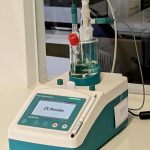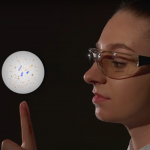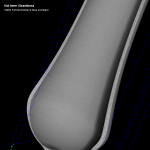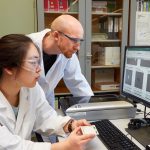SEM-EDX ANALYSIS
Simultaneous Microscopic Examination & Elemental Analysis
SEM-EDX
Operating Principle
In scanning electron microscopy (SEM), a focused primary electron beam is rastered stepwise across the sample. At each pixel, the reflected electrons are detected, yielding a microscopic greyscale image of the sample. There are two imaging techniques:
Backscattered electrons (BE) → material contrast
Secondary electrons (SE) → topography contrast
In addition, the primary electron beam triggers the sample to emit characteristic X-Rays. The elements in the sample as well as their respective modal weights can be precisely determined by analyzing the color spectrum in an EDX detector.
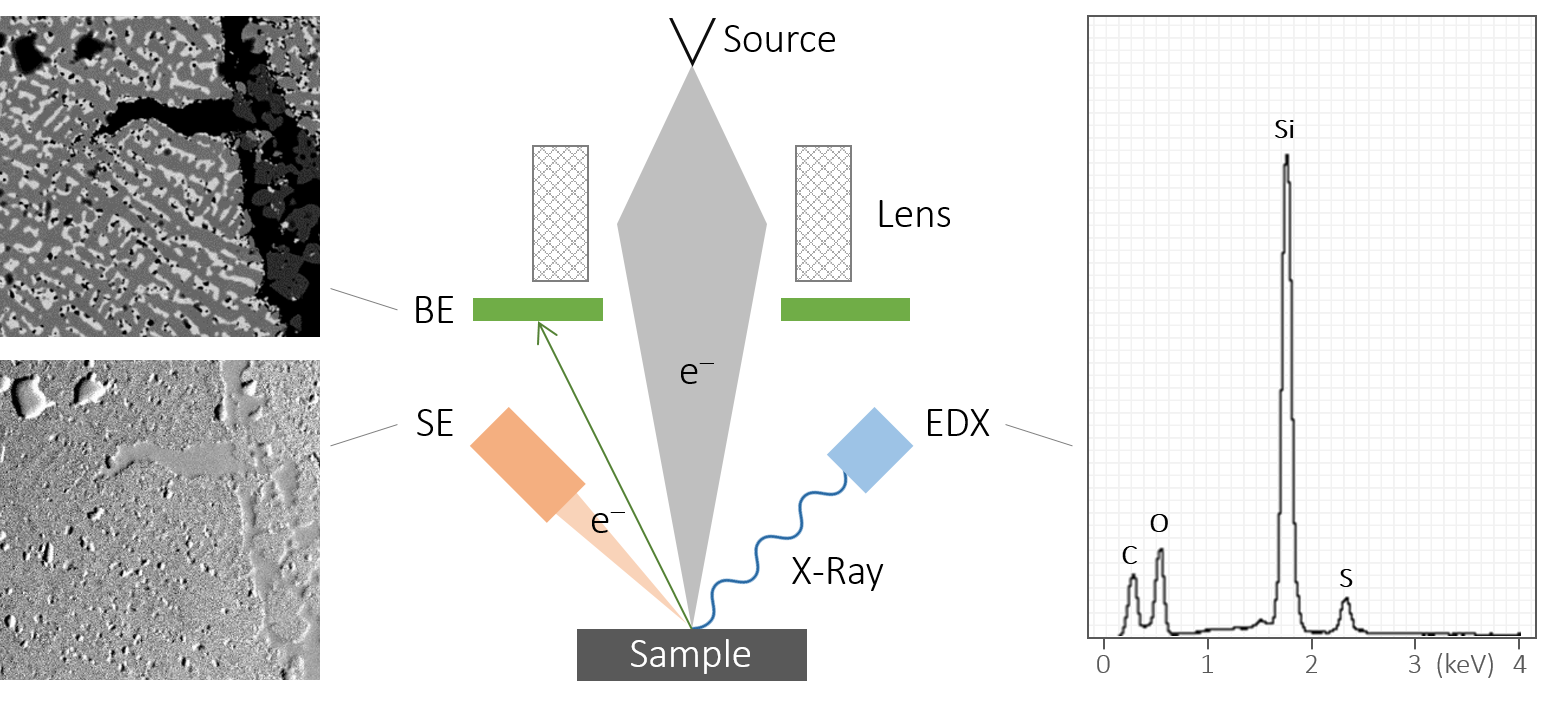
Applications
- Examination of damage and wear on a microscopic level
- Analysis of aging, corrosion and oxidation of components
- Determination of the origin of the particles, chips and particles that lead to failure
- Error analysis in the delamination of coatings and paints
- Investigation of electrical contact problems
- Analysis of surfaces and coatings
- Material determination and microstructural analysis
Image gallery
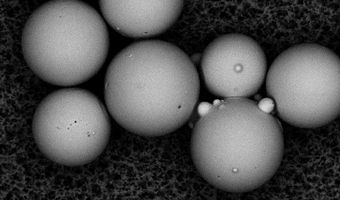
Blasting material on CN membrane
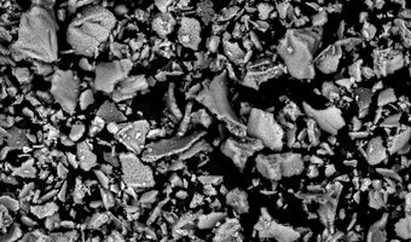
Abrasive corundum particles
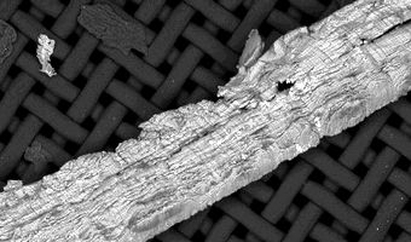
Aluminum chip on screen mesh
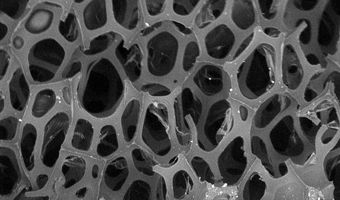
Acoustic foam

sand particles
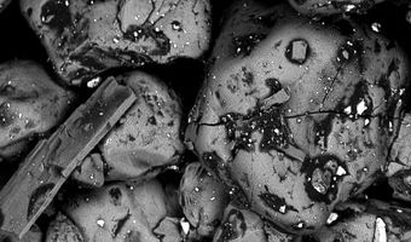
Contaminated glass particles


